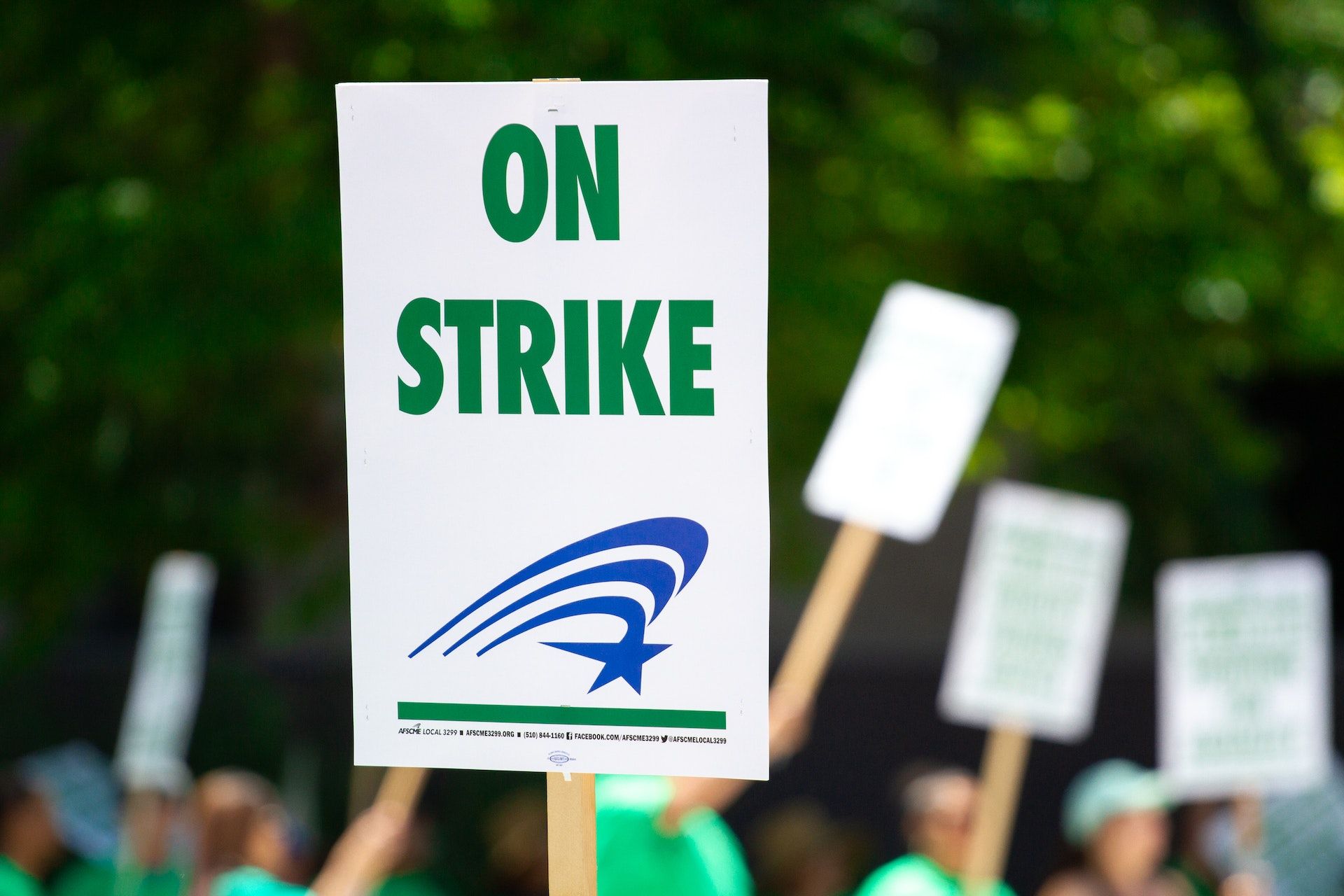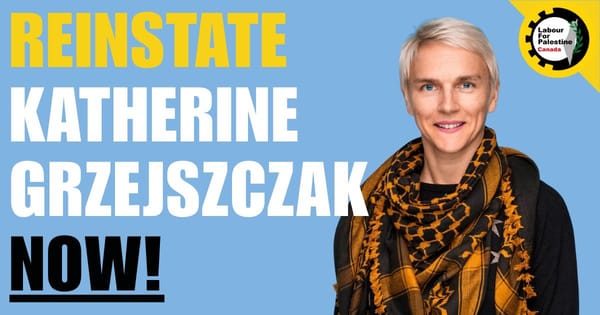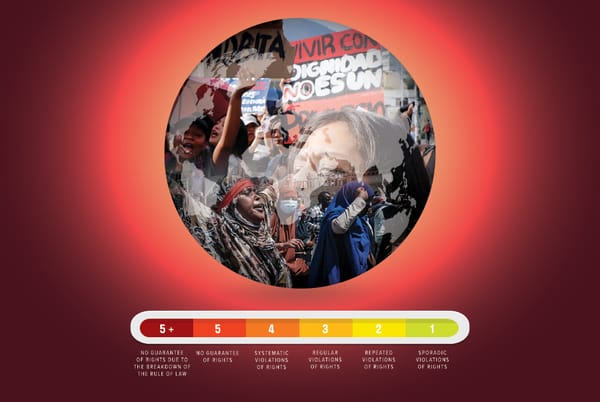
At the risk of speaking too soon, there’s growing evidence that the tide may be turning for organized labour in Canada. I say this cautiously and with considerable reservation. But if recent strike activity and union wage settlement data are any indication, Canadian union members seem to be on the march in a way they haven’t been since at least the onset of the pandemic.
At present, 4,700 members of the International Longshore and Warehouse Union (ILWU) are on strike across 30 port terminals in British Columbia. These workers voted 99.24 per cent in favour of strike action and hit the picket line July 1. ILWU has a strong tradition of labour militancy, up and down the Western ports of North America. Should the union win its current demands around wages and protections against automation, job loss and outsourcing, it’s no stretch to say this will shape the direction of work in the industry heretofore.
At the time of writing, the federal labour minister, Seamus O’Regan, has asked a federal mediator for a recommended settlement to give a “forceful nudge” to push the union and the employers’ association over the finish line. While not the heavy-handed approach seen from this government in past labour disputes, the spectre of back-to-work legislation nevertheless looms. The supply and confidence agreement with the federal NDP renders the legislative hammer more politically sensitive than would be the case under a Trudeau majority government, but, with Liberals in power, it’s never out of reach.
In Ontario, more than 3,700 workers at Metro Inc. across the Greater Toronto Area recently delivered 100 per cent support for a strike. These Unifor members could soon be on the picket line if their wage demands aren’t met.
Then, of course, there were the historic strikes by more than 155,00 Public Service Alliance of Canada members and 55,000 CUPE Ontario education workers. Although neither strike resulted in awe-inspiring wage gains, in both cases the unions nevertheless won above-average pay raises. More importantly, they inspired workers across the country to ask for more, just as employers feared they would.
And asking for more appears to be exactly what many union members are doing. Recent data from both Ontario and B.C. suggest that a number of unions are pushing for major wage gains at the bargaining table and, surprisingly, pulling it off.
Before reviewing these recent union wage gains, a word of caution is in order. As I’ve covered many times in Class Struggle, workers — union and nonunion — have suffered considerable real wage losses as inflation surged and then remained elevated following the pandemic.
The persistence of a relatively tight labour market amidst a surprisingly robust recovery has provided some space for workers to bargain up wages, even as the Bank of Canada’s interest rate hikes cut against this tendency. Average hourly wages for all workers have risen at roughly 5 per cent on a year-over-year basis for several months, with hourly pay now growing slightly faster than inflation. But this has hardly made up for past losses.
Union members, on average, haven’t managed to push wage growth to meet the hourly figures for all workers. In 2022, union wage settlements in major collective agreements — those covering 500 or more workers — averaged just 2.5 per cent. Even this paltry figure was an improvement over recent years. Between 2014 and 2021, wage increases in major union settlements came in at only 1.56 per cent, hitting a low of 1.2 per cent in 2015.
That being said, averages aren’t everything. Data from Ontario and B.C. suggest that several important “outlier” agreements have secured major wage gains for workers. If labour wants to spread similar pay raises to union members across the country, it should be learning from these examples.
In 2022, 123 private sector union contracts covering more than 156,000 workers were ratified in Ontario. The average wage settlement was 4 per cent for the year, with a high point of 4.7 per cent in the third quarter. Though admittedly not historic wage gains, these did begin to close the real wage gap as inflation dissipated in the latter part of the year.
However, several significant victories pushed well ahead of the averages. Last March, Teamsters Local 938 won a nearly 20 per cent first year wage increase, and a 7.5 per cent yearly average pay raise, for workers at Menzies Aviation service provider. In April, more than 200 members of the Ontario Public Service Employees Union (OPSEU) won more than 20 per cent at social care provider Community Living in Chatham-Kent. Then, 466 members of the Canadian Union of Public Employees (CUPE) Local 2345 did the same at Community Living Windsor in November, the biggest union win in quarter three.
The story in B.C. was similar in 2022. As inflation averaged 6.9 per cent — slightly above the national figure — union wage settlements, particularly in the private sector, began to tick upward. Private sector union contracts averaged nearly 4 per cent, while average public sector wage gains trailed just behind. This was also after several years of union wage increases barely hitting 2 per cent. Yet, here too, unions secured yearly wage gains of 5 per cent and more in several collective agreements in both the private and public sectors.
Thus far in 2023, things in both provinces, but especially in Ontario, appear to be improving further. Average union wage growth in the province is ahead of inflation for the first time in a long time, certainly since the start of the pandemic. During the first quarter of 2023, inflation averaged 5.1 per cent, before falling to 4.4 and 3.4 per cent in April and May, respectively. Meanwhile, average annual union wage increases in Ontario inched up to 3.6 per cent in quarter one and 3.8 per cent in quarter two.
However, again, the truly remarkable thing is the number of collective agreements blowing past the average and registering big wage increases.
Between January 1 and March 31, 13 out of 62 collective agreements ratified in Ontario contained first year wage increases above inflation (i.e., 5.1 per cent or higher in quarter one). Some unions have been frontloading wage gains to make up for past inflationary losses. For example, United Steelworkers Local 1-2010 won a 11.7 per cent raise for 475 workers at Resolute FP Canada Inc., a paper manufacturer. The United Food and Commercial Workers (UFCW) Local 175 also secured an 11.4 per cent pay bump in the first year of its contract at Highbury Canco Corporation covering more than 400 workers.
In the second quarter of this year, unions in Ontario cemented 21 new collective agreements, 11 of which secured average wage increases above inflation. Continuing the trend of large first-year wage increases, Local 175 of UFCW won an impressive 12.8 per cent pay raise in year one of its contract covering 160 workers at Sobeys, a grocer, in Orangeville, Ont. Other unions — Unifor-represented public employees in Waterloo, contract staff at Carleton University and CUPE members at Ontario Power Generation — all pulled in notable pay increases ranging from 4.5 to 6.5 per cent.
Unfortunately, none of these important victories have been publicly celebrated by major unions or labour centrals, such as the Ontario Federation of Labour or the Canadian Labour Congress. This is a shame and a missed opportunity. Union members struggling to improve their pay and fight back against inflation-induced losses need positive examples and victories to inspire action. Nonunion workers need further evidence of what union membership and collective bargaining can accomplish.
Of course, we shouldn’t bury our heads in the sand and pretend everything is wonderful in the world of Canadian labour. On the whole — whether one is concerned with union density, pay or new organizing — the data certainly don’t evince success across the board.
But by not showcasing decisive wins when and where they’re happening, labour is losing out on a chance to both learn by example and inspire further efforts by workers to fight for what they deserve.
Recent Class Struggle Issues
- July 10 | Child Labour Is Making A Disturbing Resurgence Across The U.S.
- July 4 | The Level Of Workplace Stress Should Be Considered A National Crisis
- June 26 | Reviewing The State Of The Labour Market – May 2023
- June 19 | Exploring The Unique Challenges LGBTQ+ Workers Face







